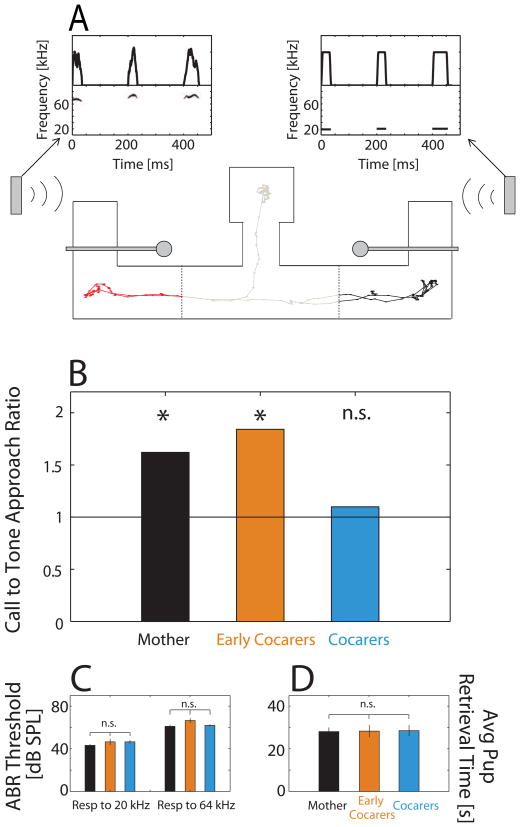Figure 6.
Maternal physiological state during pup experience contributes to long-term retention of pup call salience. (A) Schematic top view of the W-maze used in two-alternative tests of pup call recognition. Vertical gray boxes represent speakers playing back either behaviorally irrelevant ~20 kHz pure tones (right inset) or~64 kHz pup calls (left inset), depicted as spectrograms (bottom row) and amplitude waveforms (top row). Thin horizontal boxes represent servo-controlled doors positioned in the open configuration. Thin line shows an animal’s actual center-of-mass movement in the center region (gray), past the left arm threshold (red) and past the right arm threshold (black). This animal’s first trajectory is towards the pup call speaker before turning around and proceeding towards the tone speaker. Dots along the trace are spaced 0.33 s apart, and the entire trace represents the first 150 seconds of an experiment. Dashed vertical lines indicate the decision thresholds. A video of another trial from a Mother engaged in the choice behavior (pup calls emitted from the left speaker) can be found at ≪LINK to mom_pupcallatleftspkr.mpg≫. (B) Mothers approached the pup call speaker significantly more often than the tone speaker (47 call:29 tone approaches), as did Early Cocarers (35 call:19 tone). Cocarers did not show a preferential approach to either side (33 call: 30 tone). Black line represents chance. Differences between animal groups were not attributable to (C) ABR hearing thresholds, since these did not differ significantly across groups at either 20 or 64 kHz; or (D) ability to retrieve pups, since average latencies to retrieve also did not differ significantly.

